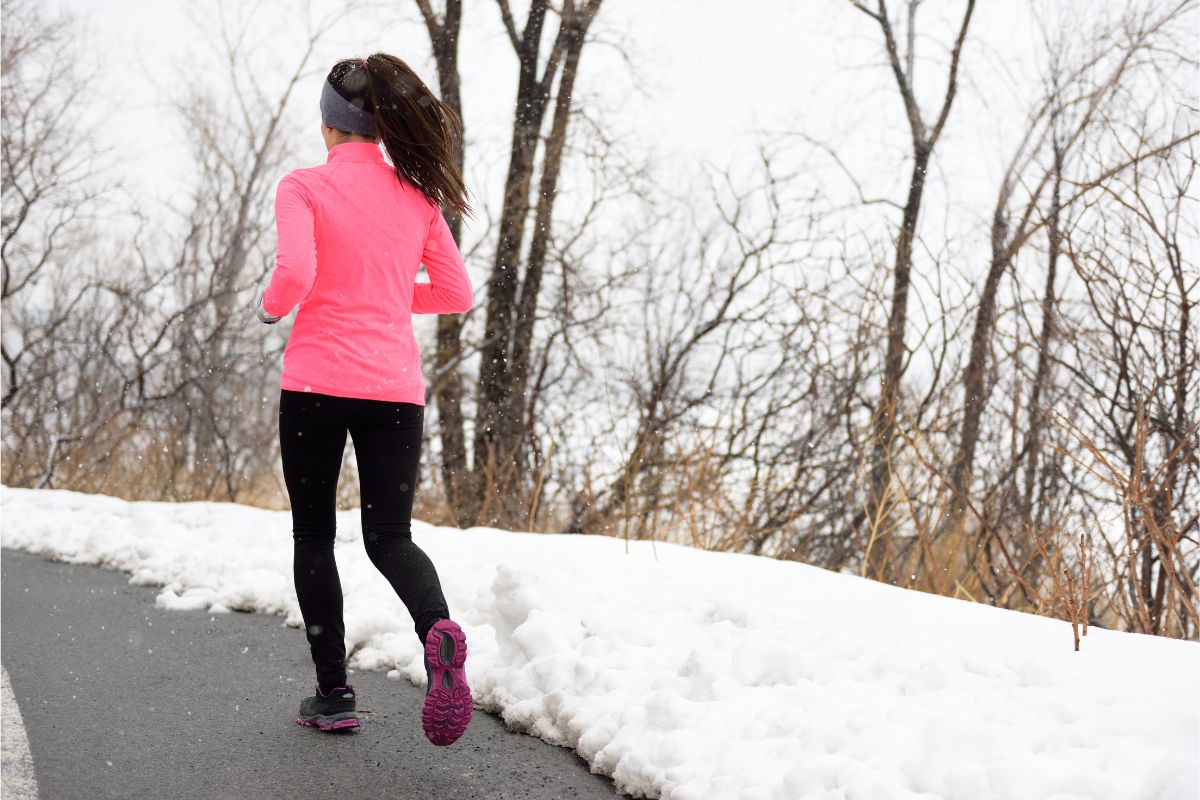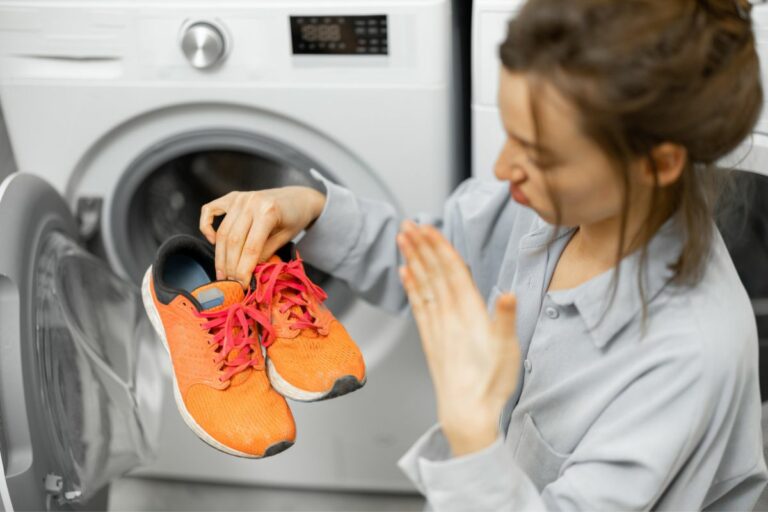What to Wear to Run in the Cold? Dress to Stay Warm in Any Temp

There are a number of different outdoor sports that require a certain level of adaptation when it comes to a change in the weather.
Running is one of these sports. When the weather changes, so does the terrain that runners rely on.
Running is great as you can run year-round if you can brave the elements, but you need to make sure you have the tools to do so.
For those that live in particularly challenging environments, having the right equipment is imperative to prevent injury.
This article will discuss the appropriate attire to wear when running in the cold weather.
So let’s get started: What to wear to run in the cold?
Different Layers To Consider
Regardless of whether you are out for a run or just running some errands, someone has probably told you that layers are key when it’s cold!
Here we will explain the importance of each layer and how to properly execute them to keep you warm and safe.
1. Base Layer
Apart from your undies, you’ll need a light base layer that is breathable to allow you to lock in some of that heat as well as let you sweat. If you’ve not heard of ‘moisture-wicking’ fabrics then you might be in trouble.
Moisture-wicking fabric does exactly what is important, it keeps your sweat moving to the fabric’s outer surface whilst keeping your body dry.
As a result, your body will be dry and comfortable and allow your body temperature to regulate itself.
This could be a sports t-shirt or a long-sleeved shirt depending on how much you feel the cold. On your bottom half, you’ll want to go for either a pair of running shorts or a pair of thin leggings.
These should be made from moisture-resistant materials.
2. Mid Layer
The mid layer offers runners more protection, this layer is important to consider as it will probably be facing the elements.
These layers usually consist of long-sleeved shirts, again made from a breathable fabric as well as windbreakers.
Windbreakers also need to be made from a moisture-wicking fabric as sweat may make its way to the outer layer of your long-sleeved shirt.
Ensuring that these layers are easy to move in and comfortable enough to use for long periods of time is key. Windbreakers should be waterproof as well as windproof.
Fleece-lined running tights can be beneficial for many who feel the cold on their legs. Depending on the number of layers you decide on wearing, these may not fit over another pair of thin tights.
For those that like to have more room when they run, waterproof running trousers can be a great addition to the layers.
These will still keep you dry and warm, but they just have a little more space and flexibility that some runners prefer.
3. Top Layer

Running jackets can be a welcome addition to runners that are braving extreme weather conditions. These should be able to endure the tough conditions on the outside, whilst becoming comfortable and flexible on the inside.
Jackets with a hood are advised as this can help to keep the neck covered.
Snow and rain should not be able to penetrate the shell you’ve created with the jacket. If your jacket does allow these elements in, you’ll quickly become cold and wet which can be extremely dangerous.
Your top layer should also consist of a hat, gloves, or headband. Covering your skin in freezing temperatures is important, including your neck and head.
Do you remember the last time you went out in the cold without a hat? And your ears nearly fell off? Yeah, that’s why! Try a few of these protective methods out to find which one is comfiest for you, it’s not a one size fits all kind of layer.
Gloves can also be an important tool to keep with you. If you find you heat up too much with gloves on you can always take them off and put them in your pockets.
Thermal running gloves can be purchased from any sporting goods store or online retailer.
Keeping your hands warm is important for circulation, forcing your body to work harder to keep the blood flowing. As a result, you’ll be wasting your energy on circulation rather than getting those miles in.
Socks
Are normal trainer socks good enough for battling the cold weather? No! Your socks as well as the rest of your base layers should be moisture-resistant. No one wants soggy feet.
Socks made from wool are great as they are super insulating and help your toes stay nice and warm. Other fabrics to look out for are polyester, Spandex, or nylon as these also keep you warm without compromising breathability.
Shoes
One of the most important aspects to consider when running in cold weather is your trainers.
Wearing normal running trainers in icy conditions will almost certainly cause you to slip and fall as the sole and grips are not meant for difficult terrains.
The outsole of the trainers should be weatherproof to combat the elements and keep your feet dry and have enough traction to withstand the terrain.
If you frequently run on particular types of terrain such as ice, snow, or wet roads investing in a shoe made for that terrain will be beneficial.
It’s also important the trainers have enough insulation to keep the feet warm, as cold toes can soon bring your run to a grinding halt.
Finally, consider the level of coverage the shoe brings you. If you are running in snowy conditions, you don’t want the snow to flick into the trainer and cause little puddles or make your socks wet.
Higher-top trainers will be better suited to these conditions.
The Bottom Line
Running is therapeutic as well as beneficial for your health. When running in difficult conditions in the winter months it’s important to be as prepared as possible to avoid causing injury or harm to your person.
We hope you found this article useful and remember, wrap up!






